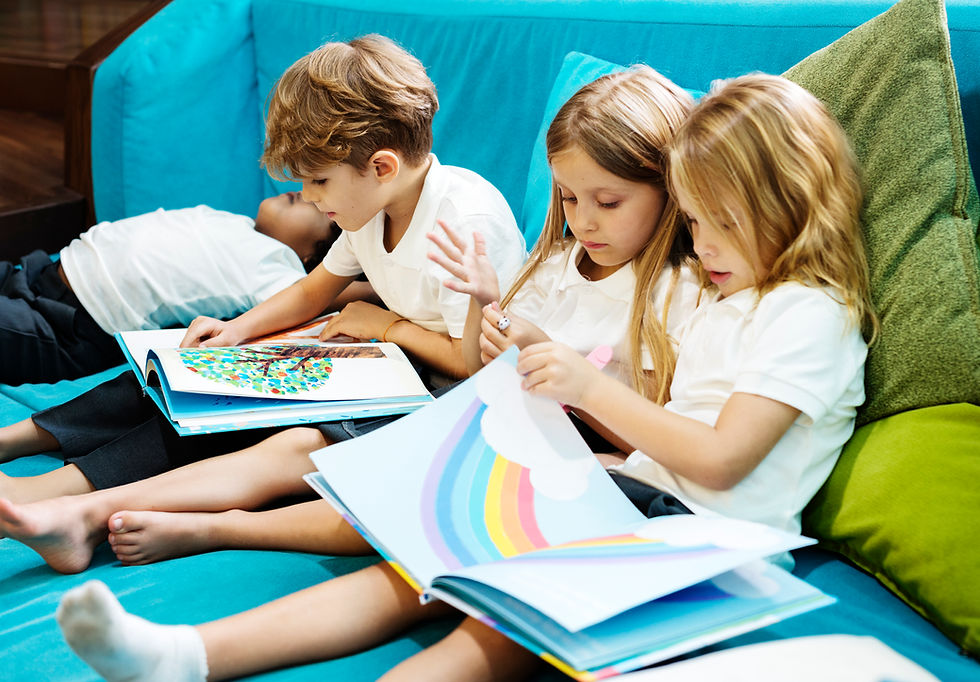Just For Teachers
- Karolyn Wallace
- Sep 26
- 2 min read
A lesson plan featuring Karolyn's book, I Love It When We Read Together!
I Love It When We Read Together: The Joy of Partner Reading
Reading is so much more than words on a page—it’s about connection, curiosity, and conversation. When children read with a partner, whether at school, at the library, or snuggled up at bedtime, they open the door to new ideas and build skills that last a lifetime.

Why Partner Reading Matters
Sharing a book with someone else encourages questioning, deeper comprehension, and richer discussions. Kids learn to notice details, make connections, and express their thoughts while enjoying the companionship of reading together. It’s not just about finishing the story—it’s about exploring it together.
Strategies to Try Together
Here are a few simple strategies children can use when reading with a buddy:
Wonder aloud – Share questions as they come up.
Make connections – Link the story to personal experiences.
Use the pictures and words – Look for clues to figure out tricky parts.
Take turns – Share the reading role.
Change your voice – Bring characters to life with expression.
Ask questions – Keep the conversation flowing.
Imagine what happens next – Predict the story’s direction.
Share ideas – Agree, disagree, and explain why.
These playful yet powerful strategies give kids tools to unlock meaning in every book.
Bringing the Lesson to Life
When introducing partner reading, model the process. Show students or children how to try one of the strategies, then let them practice with a partner. Encourage them to experiment—some strategies will work better with certain stories than others.
For example, one child might notice a clue in the illustrations, while another wonders aloud about what will happen next. By sharing and comparing ideas, they learn from each other in real time.
Beyond the Classroom
Partner reading doesn’t stop when school ends. Families can bring these same strategies into nightly reading routines. While reading together, parents and caregivers can pause to ask questions, invite predictions, or encourage children to explain whether they agree or disagree with what’s happening in the story—and why.
Not only does this strengthen comprehension, but it also helps children build confidence in expressing their thoughts and backing them up with evidence from the text.
The Takeaway
Every time we open a book with someone else, we’re doing more than reading words—we’re creating a shared experience filled with joy, curiosity, and connection. By reading together, children learn that books are not just stories to be consumed but adventures to be explored side by side.
Download Yours Today!



Comments